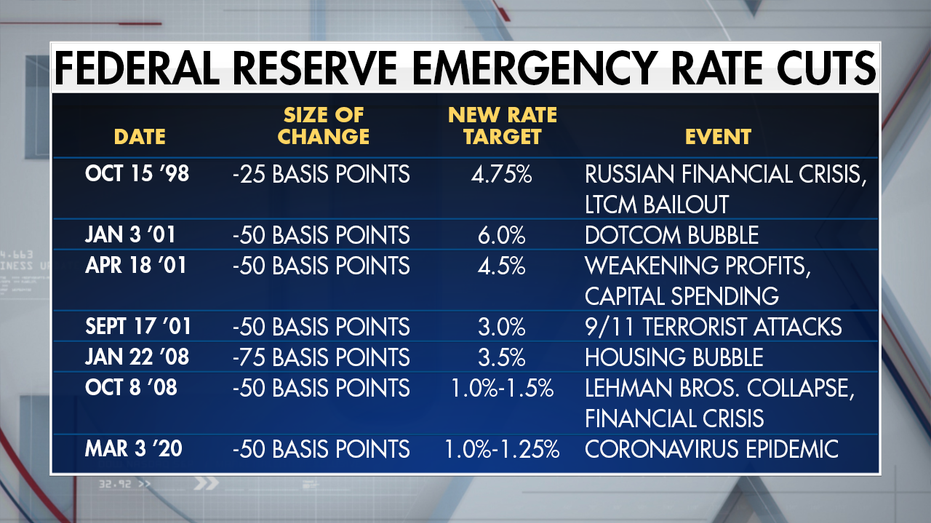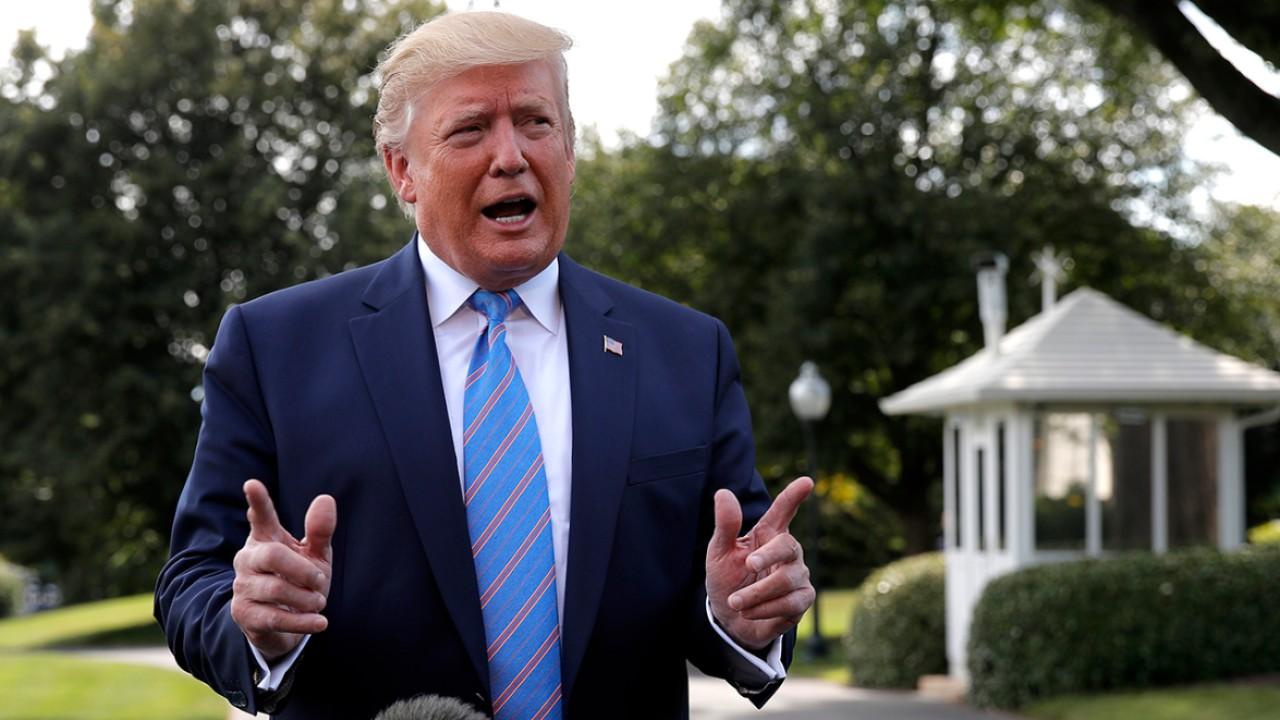Coronavirus may force Fed to give Trump more rate cuts
'This is a Fed that wants to be more proactive than reactive'
What pundits called a "shock and awe" reduction in interest rates by the Federal Reserve this week wasn't enough to satisfy President Trump.
He made clear in a matter of hours that he wants the central bank to do more, and traders and Wall Street economists predict he'll get his wish.
Trading in interest-rate futures tracked by the CME Group indicates a 72 percent chance the Fed will slash rates another 50 basis points when its monetary policy committee meets on March 18, mirroring the emergency cut on March 3 intended to insulate the U.S. economy from damage due to a coronavirus outbreak. That would take the fed funds benchmark to a target range of 0.5 percent to 0.75 percent, matching the forecast from Deutsche Bank economist Matthew Luzzetti.
GET FOX BUSINESS ON THE GO BY CLICKING HERE
He based the prediction in part on history: The Fed typically adjusts interest rates at a meeting of the monetary policy panel, and the past five times it judged that economic conditions were severe enough to warrant action between meetings — decisions that occurred over a span of more than 30 years — it followed up with a second cut at the next meeting.
"More often than not, these moves were of a similar magnitude," Luzzetti noted. "Three out of five were the same size."
Still, he and other economists noted that the coronavirus outbreak poses a thorny dilemma for the Fed. While lowering interest rates can buoy the economy, the current slowdown in consumer demand reflects worry about contracting COVID-19 from exposure to other people, whether in malls, amusement parks or on airplanes and cruise ships, not limits on spending power.

That means resolving it depends more on developing effective treatments for the virus, which has infected more than 101,000 people and killed over 3,400, than adding liquidity to the financial system, as Fed Chairman Jerome Powell pointed out himself.
Another obstacle is that interest rates already were relatively low, having hovered near zero for seven years after the 2008 financial crisis and reached a high of just 2.25 percent to 2.5 percent before the central bank began trimming them in late 2019. When the Fed began cutting rates before the financial crisis, for comparison, they had reached a peak of 5.25 percent, allowing policymakers more room to maneuver.
Lower rates benefit consumers including credit-card users and home buyers, who pay less over the life of their loans, but they pinch revenue for banks such as JPMorgan Chase and Citigroup that typically buoy margins by passing rate increases on more quickly to borrowers than depositors.
INVESTMENT BANKS RELOCATE WALL STREET WORKERS AS CORONAVIRUS SPREADS
The economic outlook is the deciding factor in the Fed's decision on whether to cut further. While a healthy job market — with unemployment falling to 3.5 percent in February as employers added 273,000 jobs — might give the central bank confidence in U.S. strength, the relative fragility of markets counters it somewhat.
The Dow Jones Industrial Average, which hovered near a record 30,000 in February, has lost 4,000 points over the past two weeks as U.S. companies warn of slowing production and demand in China, the world's second-largest economy.
Stocks In This Article:
"This is a Fed that wants to be more proactive than reactive" when faced with risks to the U.S. outlook, Ellen Zentner, an economist with the New York investment bank Morgan Stanley, said in a note to clients. "Policymakers are not waiting for financial conditions to tighten, as they did last year; they are pre-empting potentially significant financial market disruptions."
Zentner predicts that the Fed may act more cautiously than markets believe at present. She expects a 25 basis-point cut at the Fed's April meeting, a scenario that becomes likely "if increased testing in the U.S. results in rising case count that leads to more volatility and uncertainty."
FED READY TO DO MORE TO FIGHT CORONAVIRUS, OFFICIAL SAYS
The central bank may also face more pressure from President Trump, who had advocated rate cuts even before the coronavirus and reportedly wanted to fire Powell — his handpicked successor to Janet Yellen — after the Fed raised rates four times in 2018 alone.

"We're going to see whether or not the Fed wants to stimulate," Trump told reporters on Friday. "Everybody is but us. We have a Fed that is not exactly proactive. I'm being very nice when I say that."
While Powell has repeatedly said political considerations won't play a role in the central bank's decisions, economic worries and market turmoil are different matters entirely, and traders are betting heavily on more cuts sooner rather than later.
"The market is pressuring the Fed," Michelle Meyer, an economist with Bank of America, wrote in a report. "We don't expect them to disappoint."




















